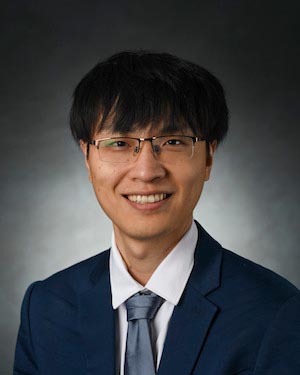Acoustics associate professor to explore new materials and imaging with sound
10/16/2020
By Gabrielle Stewart
UNIVERSITY PARK, Pa. — As a child, Yun Jing loved music. Sitting in his room, he listened to Dvořák’s New World Symphony over and over, without getting bored. He studied piano from an early age and later became interested in singing. When the time came to choose his undergraduate major, Jing’s adoration of music led him to study acoustics.
Jing quickly learned, however, that acoustics played a role in more than music. Now, as an associate professor of acoustics and biomedical engineering at Penn State, Jing researches sound in several domains.
“I was intrigued by the interdisciplinary nature of acoustics,” Jing said. “There are so many interesting applications and unsolved problems to explore in this field.”
Jing, who joined the acoustics faculty in January, investigates engineered acoustic functional materials and biomedical ultrasound. The applications of his work span from minimizing office noise to reducing vibration of vehicles to scanning the brain.
As a faculty member at North Carolina State University, Jing created a sound diffuser 10 times thinner than conventional diffusers, which could theoretically diffuse the sound of a man’s voice with material less than eight inches thick — rather than the nearly seven-foot thickness a typical diffuser would require to block the same noise.
In April, at Penn State, Jing was awarded a $343,590 grant from the National Science Foundation to investigate the creation of a novel acoustic material that can control and leverage the absorption of sound waves. He plans to develop materials that can absorb acoustic energy, among other functions, with applications in noise control, architectural acoustics and communication.
In August, Jing received a $455,226 grant from the National Institutes of Health to study the imaging of brains using a method that combines laser pulses and ultrasonic waves. This technique, known as photoacoustic tomography, could allow for imaging of deeper tissues compared to conventional optical imaging methods.
Jing earned his bachelor of science in electronic science and engineering at Nanjing University in 2006 before moving on to Rensselaer Polytechnic Institute to complete his master of science in 2007 and doctorate in architectural acoustics in 2009. He worked as a postdoctoral fellow at Harvard Medical School from 2009-11 before taking a position as assistant professor of mechanical and aerospace engineering at North Carolina State University, where he was promoted to associate professor in 2017.
Now, at Penn State, Jing views his appointment as an opportunity to enact meaningful change.
“I hope to expand my lab and build new collaborations across departments and colleges,” Jing said. “My goal is to establish a world-class acoustics lab where we can conduct both fundamental and applied research that can make a positive impact on society.”




